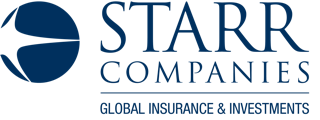About
THE SAFE PILOT PROFICIENCY PROJECT: PROVIDING TOOLS FOR IMPROVED PILOT SAFETY
The genesis of the SAFE Pilot Proficiency Project (PPP) began as a series of discussions amongst SAFE members during AirVenture 2010. The dialogue centered on ways that SAFE could contribute valuable tools to help pilots maintain proficiency, especially since it was becoming evident that pilots were not flying as much as they had in years past. In 2011, we had discussions with potential sponsors Redbird Flight Simulations and EAA, and with interested seminar presenters and simulator instructors. It seemed apparent from the accident statistics that we could improve the record with a program of seminars and simulator scenarios focused on those areas where pilots were losing proficiency due to diminished flight hours..
In 2012, the proof-of-concept PPP debuted at AirVenture, hosted by EAA, and blessed by the FAASTeam as a qualifying WINGS event. It, launched in the form of a weeklong series of seminars and simulator “flights” for the pilots who signed up. The seminars addressed key safety-of-flight topics, including: angle of attack awareness; transition training; CFIT; single-pilot IFR operations; stick-and-rudder skills; and more. In total, 14 seminars were offered during the weeklong event. In addition, pilots were given the opportunity to “fly” 11 different flight scenarios in the Redbird FMX flight simulator. The simulator sessions were comprised of pre- and post-flight briefings along with a choice of flight scenarios for both VFR and IFR pilots designed to improve their proficiency. A full report of the AirVenture PPP is available here.
Starr Aviation became a sponsor in the fall of 2012, recognizing that pilots who participated in the program decreased their risk of having an accident. Starr also offers “accident forgiveness” to participants. The simulator portion of the Project was next conducted at the 2012 AOPA Summit in Palm Springs, and at the Women in Aviation International Convention in the spring of 2013. During the 2013 edition of Sun ‘N Fun, SAFE again offered the entire program including scenarios and seminars.
The enthusiasm shown by participants in the Project led to the realization that it would be beneficial to the GA community if SAFE could make the PPP more widely available. Many pilots can’t attend the handful of events where it was currently being offered. A small committee was formed to investigate the feasibility of turning the PPP into a weekend event offered regionally on a quarterly basis.
That plan would also provide Flight Schools, FBOs and Training Centers with an occasion to expose pilots to the value of using flight simulation as an affordable means of maintaining proficiency. Those hosting the PPP could increase the usage of their simulators and provide incentive for pilots to enroll in an ongoing program of proficiency training. Sponsors Sennheiser Aviation and AvWeb joined with Redbird Flight Simulations and Starr Aviation in those discussions.
For the program to expand, it would be necessary to train instructors in best practices for conducting the simulator portion of the Project. Thus, a weekend training event was held in June at Skyport, (the Redbird laboratory/training center in San Marcos, TX). Within two days of the announcement of the event, all training slots were filled. After the weekend there were 12 certified Redbird PPP instructors on board.
As planning for the first weekend PPP solidified, Redbird suggested using Skyport as the venue and scheduling it for the weekend preceding their annual Migration. Although there was the possibility that the AOPA Summit (held two weeks earlier in nearby Ft. Worth) and Wings Over Houston (held the same weekend as the PPP) might impact attendance, it seemed the perfect location to host the inaugural weekend Pilot Proficiency Project. The PPP team decided that the weekend events should be fee-based, thus bringing a greater sense of the true value this proficiency training.
The first Regional PPP debuted on October 26-28. Though it drew only 28 paying participants (albeit from as far away as Colorado), it proved to be a great success. “The smaller class size turned out to be a blessing in disguise,” said Doug Stewart, SAFE Executive Director. “Every single participant told us that the individual attention improved their experience and helped make the event so successful.”
There were seven seminars offered during the San Marcos event including: Single-Pilot IFR; Stick and Rudder Skills in Glass Cockpits; Human Factors in Loss of Control; iPad Best Practices using ForeFlight; Tailwheel Tips and Tricks; Angle of Attack Awareness; and GPS: Beyond the Basics. Simulator instructors conducted a dozen challenging sessions in Redbird simulators. Surprisingly, about a third of the participants chose to train with a “six-pack” legacy instrument panel rather than the simulator’s available glass cockpit.
An evening social event is included as part of the weekend. This is predicated on a May 2013 survey of the SAFE membership, which indicated that members wanted the opportunity to network and discuss topics of educational interest. At the San Marcos event, Rich Stowell and Doug Stewart led a lively discussion of “The Art of Teaching in the Cockpit”. A full report of the San Marcos PPP is available here.
The hope is that bringing the Project to different parts of the country will contribute to fulfilling SAFE’s mission. The SAFE Pilot Proficiency Project has many tools that pilots can take advantage of to maintain and improve their proficiency at an affordable price. It also provides flight schools and training centers with an opportunity to build their clientele base and increase revenue from their simulators. If you are interested in hosting a Project at your facility, please contact Doug Stewart.




